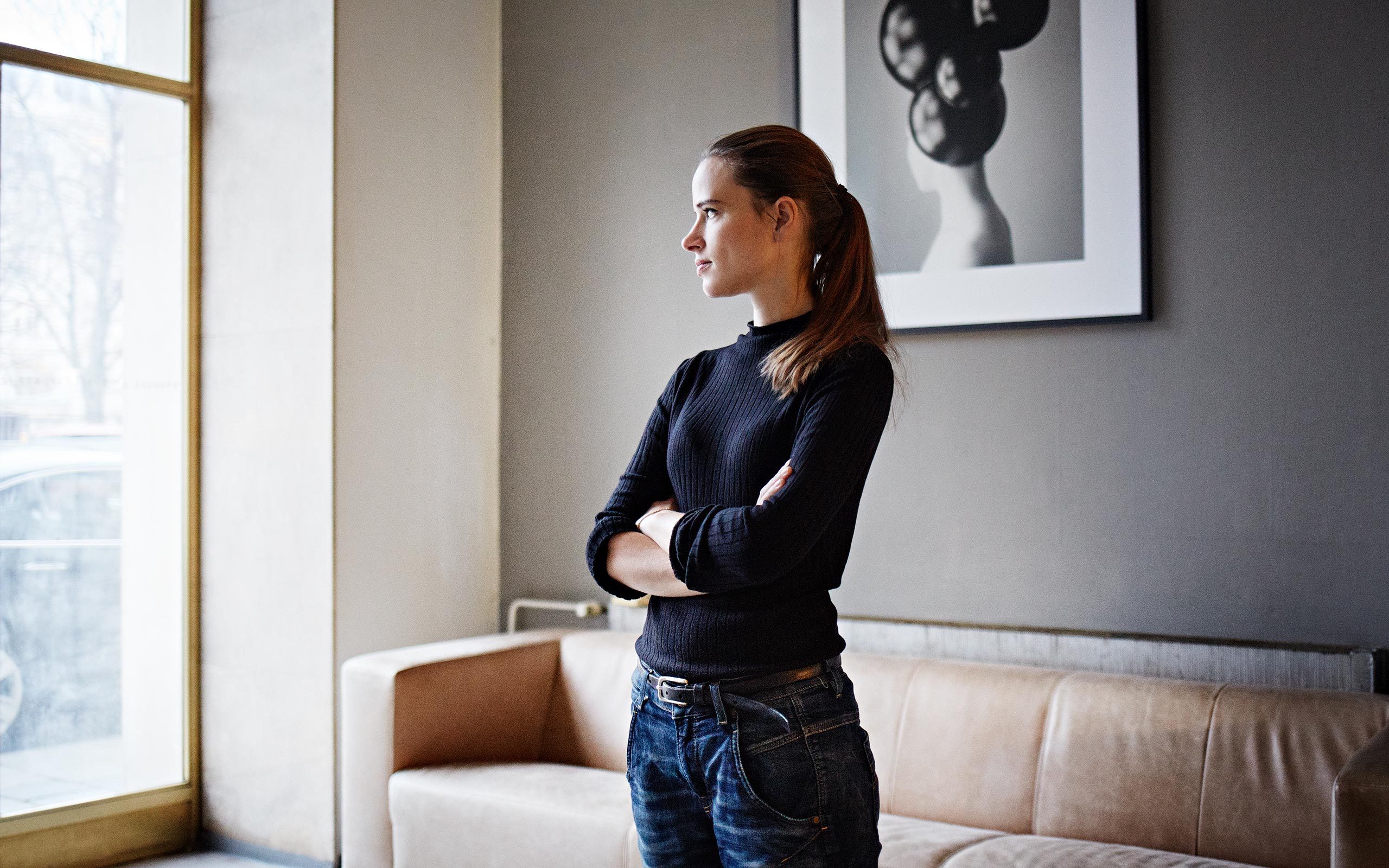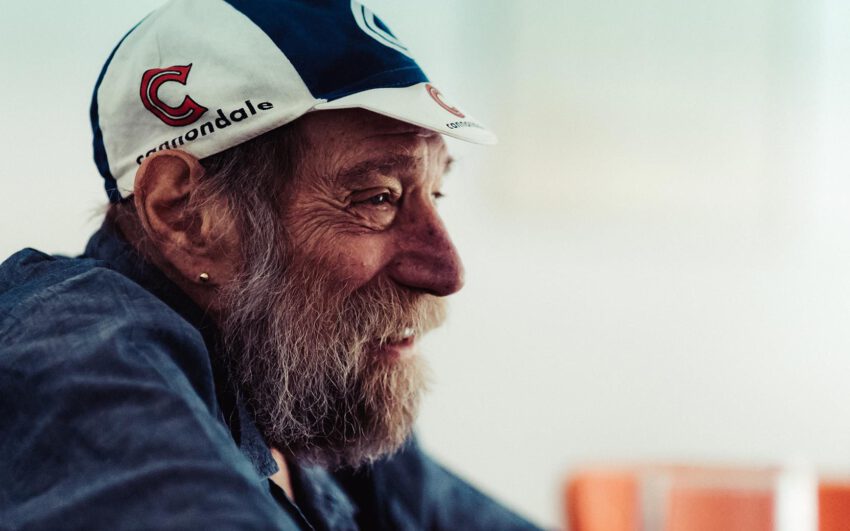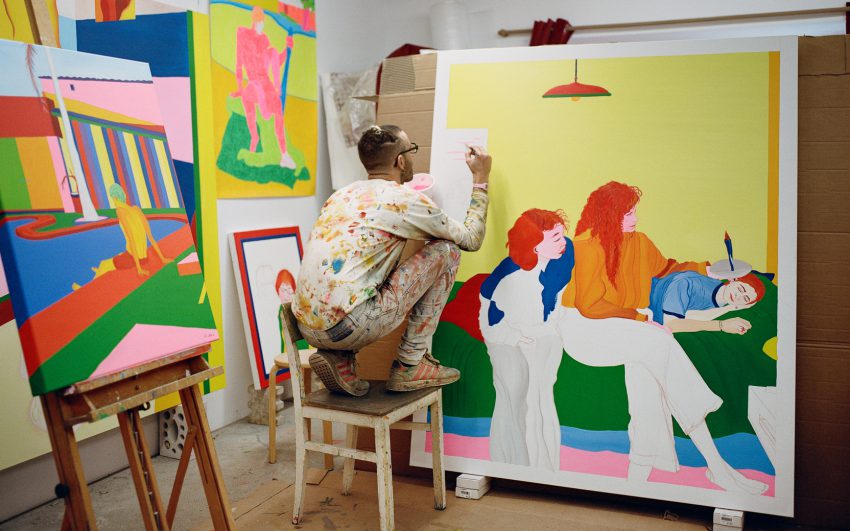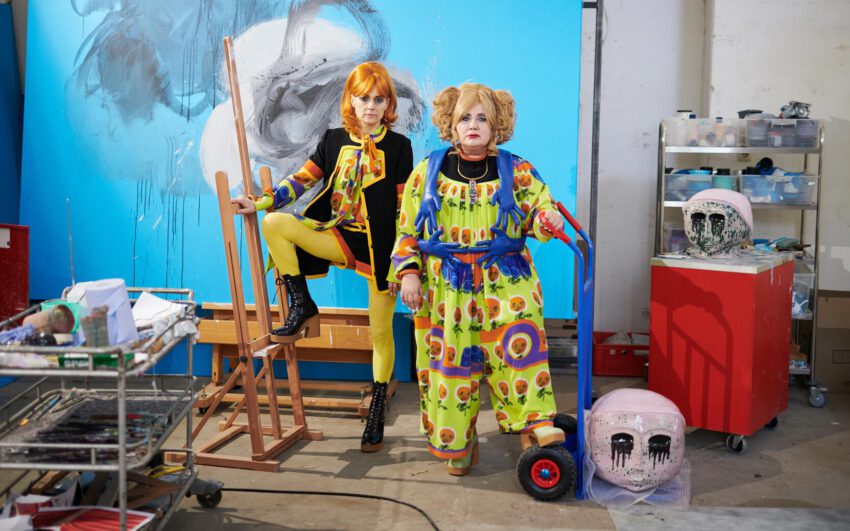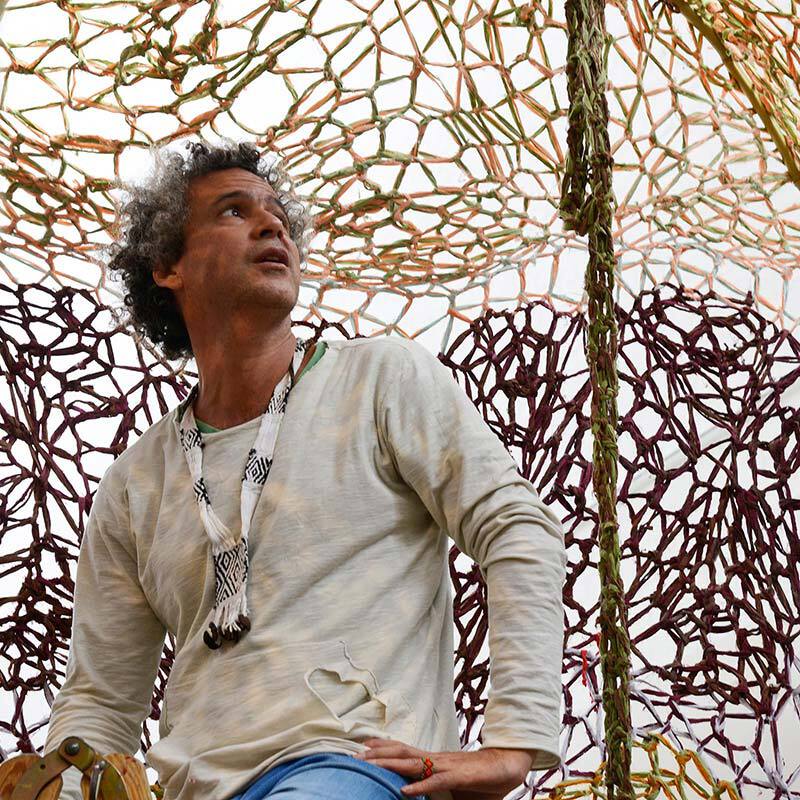The starting point of Tina Lechner’s analog black-and-white photographs is always the female body; it serves as a projection surface, concealing, complementing, and distorting it with geometric objects and costumes. Lechner’s work process follows a perception of photography as sculpture. The dividing line between man and machine, artificial and natural, is no longer recognizable in her work. We invited the artist for an interview which took place in her studio in downtown Vienna.
Tina, how did you arrive at the point of devoting yourself to art?
Before my art studies, I worked as a graphic designer. The decision to study art came to me suddenly overnight: an intense longing to produce something of my own. I had no choice but to pursue it, I was utterly taken by surprise at how compelling this impulse was and which in fact continues to this day. I decided to apply to study photography at the Academy of Fine Arts in Vienna where I was accepted and studied under Matthias Herrmann and Martin Guttmann.
Why the decision to study photography? Was it intuitive or had you already worked in the medium?
Before my studies, I hadn’t photographed much. I applied myself seriously for the first time to photography as a medium in the preparation of my academy application portfolio. I realized very quickly that I wanted to work in analog black-and-white photography.
Many artists of your generation adopted the possibilities offered by digital photography and digital image processing. You decided to work with analog, why is that?
Initially, it was a fascination for the material, especially the slow development process from the idea to the final print. The analog process is a decelerated and concentrated process. Analog photographs can only be subsequently corrected in terms of tonal values, brightness, and contrast. Blemishes and mistakes remain. This requires that all decisions must be made beforehand and allows me to work in a very focused way. A further decisive factor is the grain of the film which I love. I can describe it as having almost a kind of haptic quality, I can’t imagine my works without it.
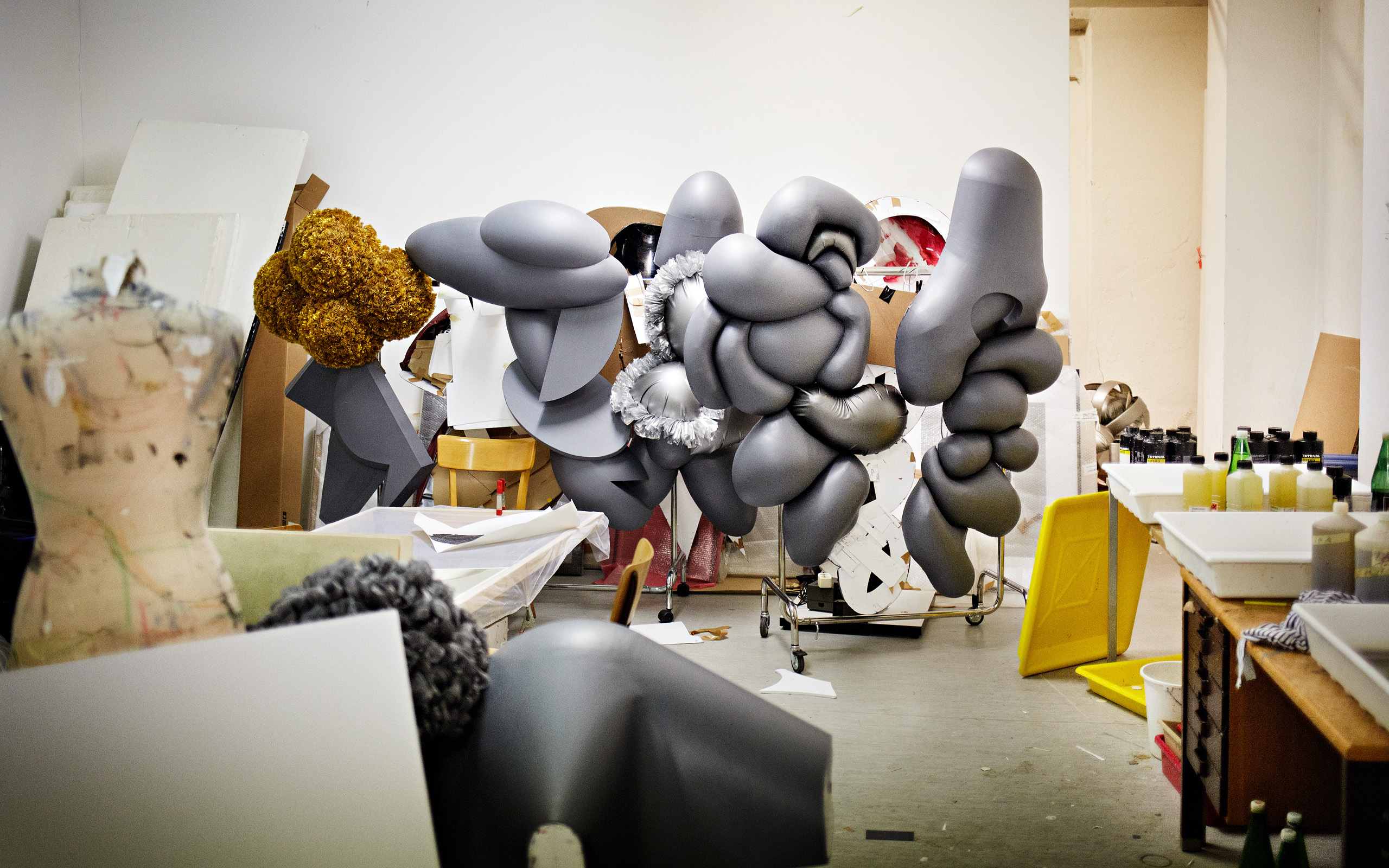
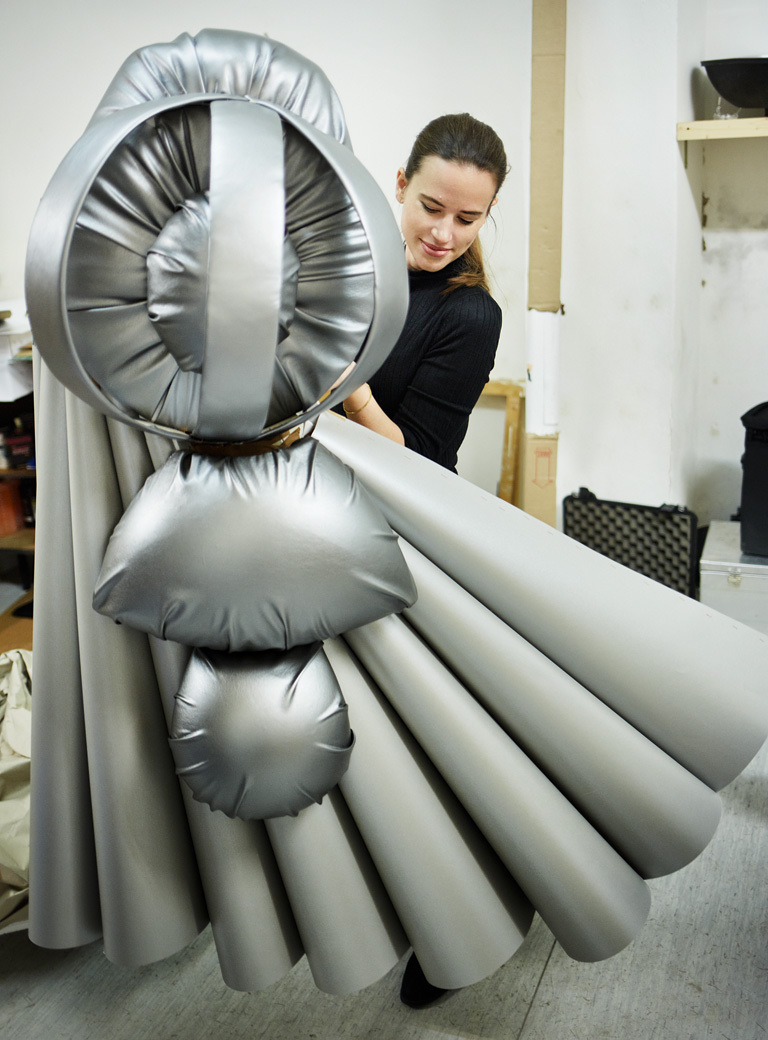
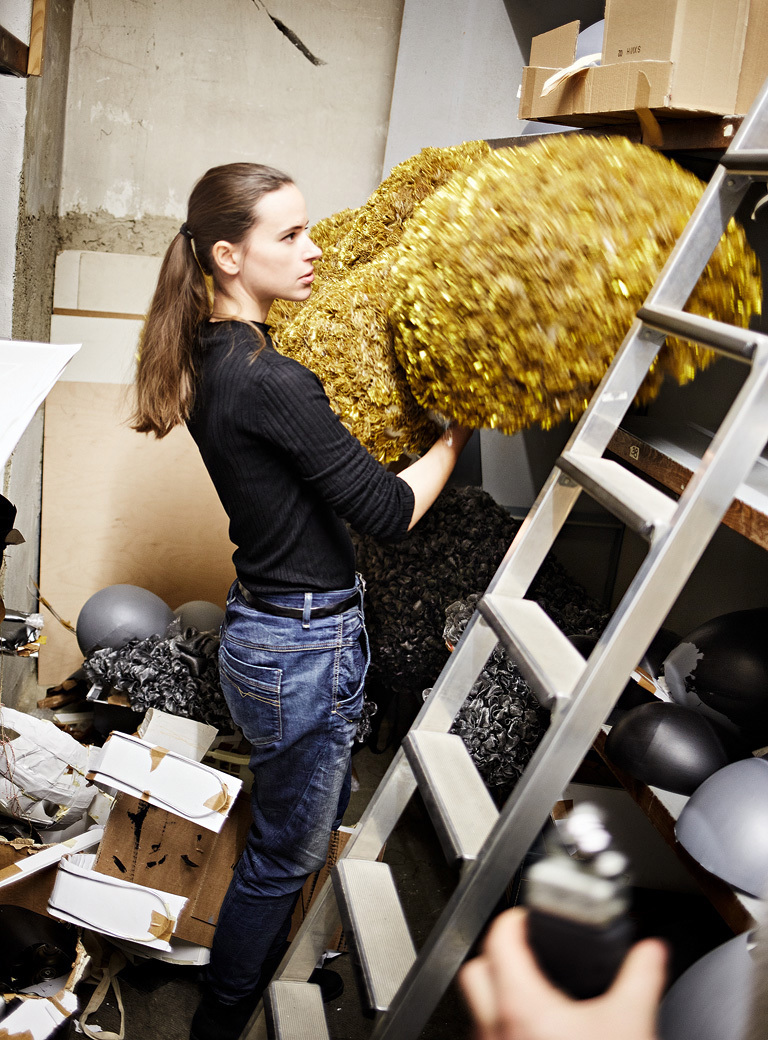
Right at the beginning of your artistic career you developed a very specific language of form that you pursued consistently throughout the early years. In addition, you have experimented with the technique of solarization, can you tell us more about that?
I have indeed experimented intensively for some time with solarization and pseudo-solarization, which is a second exposure of the positive or negative resulting in a partial reversal of the tonal values. The technique is virtually uncontrollable and the results are not reproducible which appeals to me since photographic technique becomes secondary and in addition it means that I spend less time in the darkroom and spend more time on the designing and building of objects and costumes.
Your works go, as you say, beyond conventional photography to concentrate predominantly on the “object”. What value does photography have for you?
I apply the medium of photography in order to make my objects visible to the viewer. An essential part of my work is indeed the design principle of material montage, and not photography. Photography is simply the most appropriate medium through which to realize my ideas. Everything starts with sketches on the basis of which I develop my objects. Based on the drawing, these will ultimately be worn by a model and photographed.
What materials do you use for your objects?
I made my first objects exclusively from paper and cardboard. Then I began to work with synthetic materials that are still an essential part of my work. In the meantime, I have been using a variety of materials and I add new ones all the time. What is important in the process is the sense of pleasure in beauty, the materials themselves, their surfaces, their alignment and especially their forms.
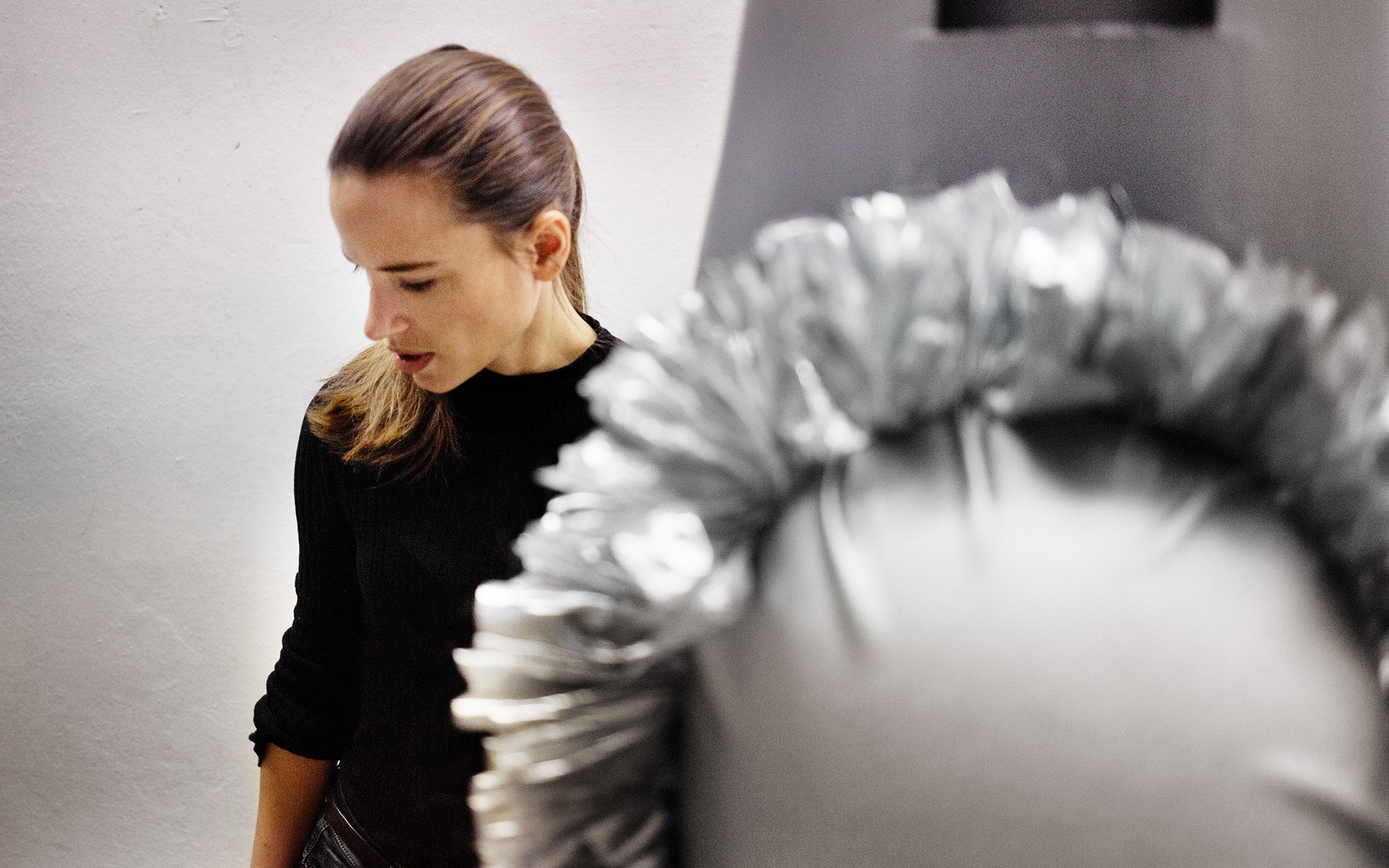
How do the ideas for these requisites come up?
On one hand much derives from entries I have made in my sketchbook. On the other hand, there are many things that inspire me – the Triadic Ballet, years ago when I discovered it at the academy, immediately fascinated and inspired me and has continued to do so. However, my works have many sources of inspiration including painting and fashion or African costumes. The creation process is certainly intuitive. There is a basic idea, a clear concept of how the photograph has to be, but my work process is not homogeneous. My works develop in several acts as in a theatrical production. From the first idea in a sketch to the final product – the photograph.
Your studio resembles more a workshop than a classic/typical photographic studio. One has the feeling of moving among stage sets.
That’s true. One can actually walk through the various work steps of my development process – a “Making Of” so to speak. (laughs) My work is not only confined to the understanding of analog photography and materials. To transform the sketch is the first step, then to select the right materials, to produce the prop and to photograph it in the studio, applied to the female body. The developmental process is not only focused on the “final product”, the photograph itself, it is a narrative process that can be discovered in the picture in the relationship of body and object and the result of perfect staging.
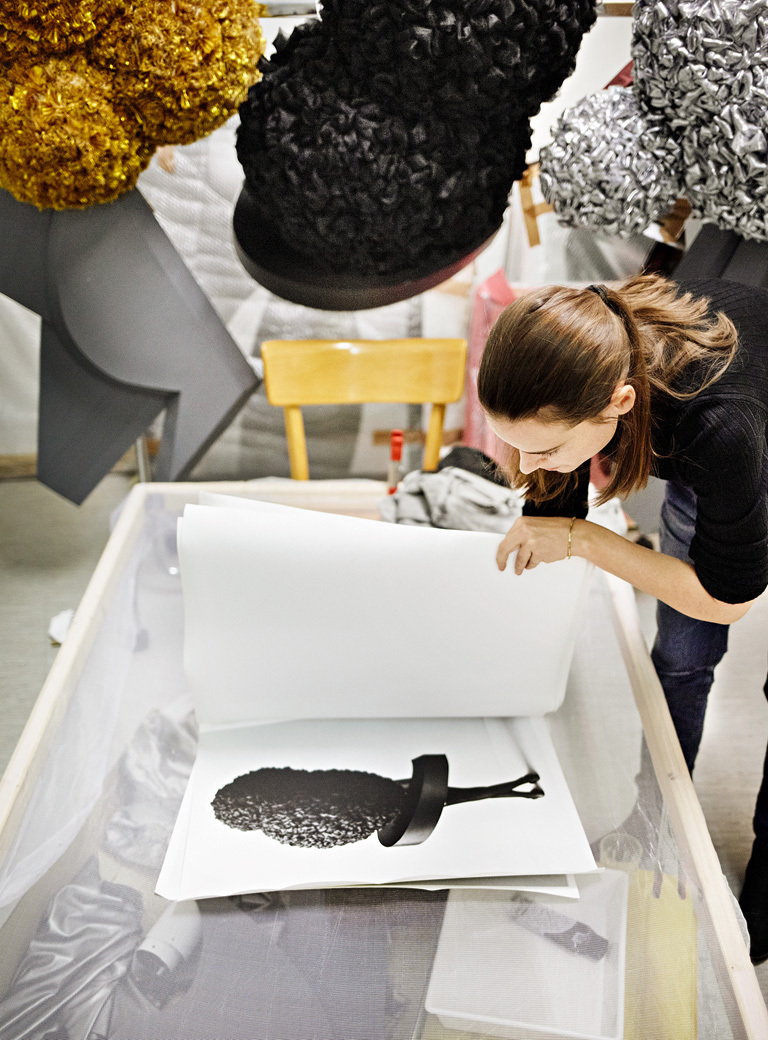
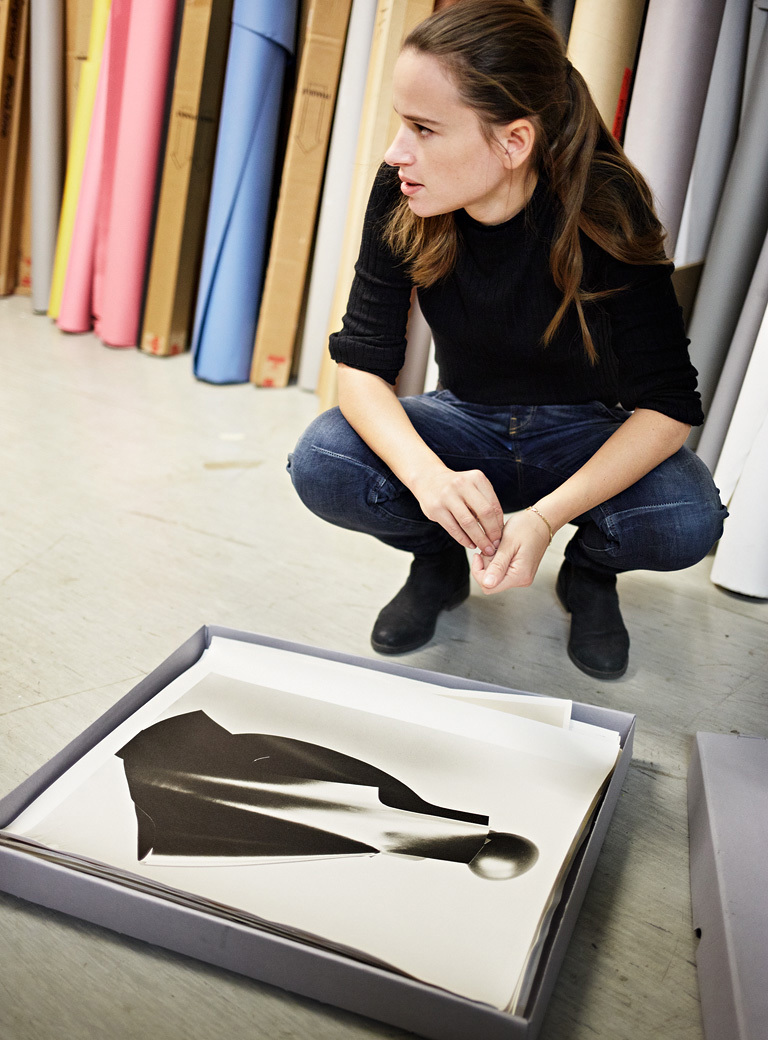
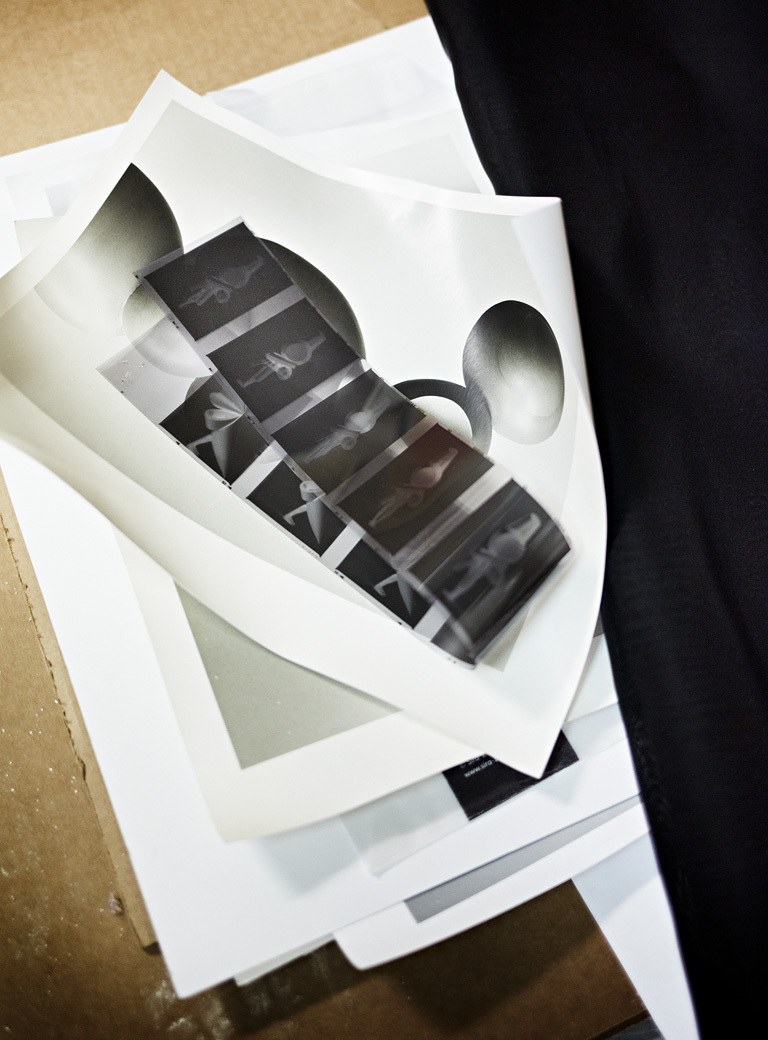
Have you ever considered exhibiting your props and objects?
The objects are produced by me exclusively for the photographs and are not intended to be shown separately. It is the combination of the two that is important to me – furthermore, the human body in the images is just as important as the objects themselves. The combination of both provides the exciting moment. Everything I want to show is in the photograph.
To develop independent objects or object art requires in my view, a complete rethinking and an entirely different approach. My props could not and would not be satisfactory on their own, and they don’t have to be, they serve purely to communicate the reductive visual vocabulary that excites me.
Besides the objects themselves one often discovers head and shoulder sections, sometimes also the torso and the legs, but never a face that would identify the bearer of your props. Does the face not interest you at all?
It is not important to me to show identities, I am more interested in the play of surfaces, the sensuous organ that is the skin, as well as the surfaces of my objects and their clear alignment. This does not only apply to the body and the props, but this aspect has also extended into the space. In my early work for example I solely concentrated on heads. There was no indication of a location, a space. In my more recent works, this aspect was added. All along, I have thought and worked in series. Extensive cycles develop out of that and extend over a greater period of time. I began the “current” series a year ago. Unlike the previous ones, I now work on photographs of the entire body in combination with the plane of the space. I now work on photographs of the entire body in relationship to the plane of the space.
A further development in your work, as it were. Can you give an outlook on coming projects?
This year I have a large project in the form of a catalog with text contributions by Kathy Battista, Nathalie Khan, and Marlies Wirth. This will present a comprehensive overview of my work so far. In the production of the catalog, I will place special attention on print quality with the intention of matching it as closely as possible to that of the analog barite prints of the original photographs.
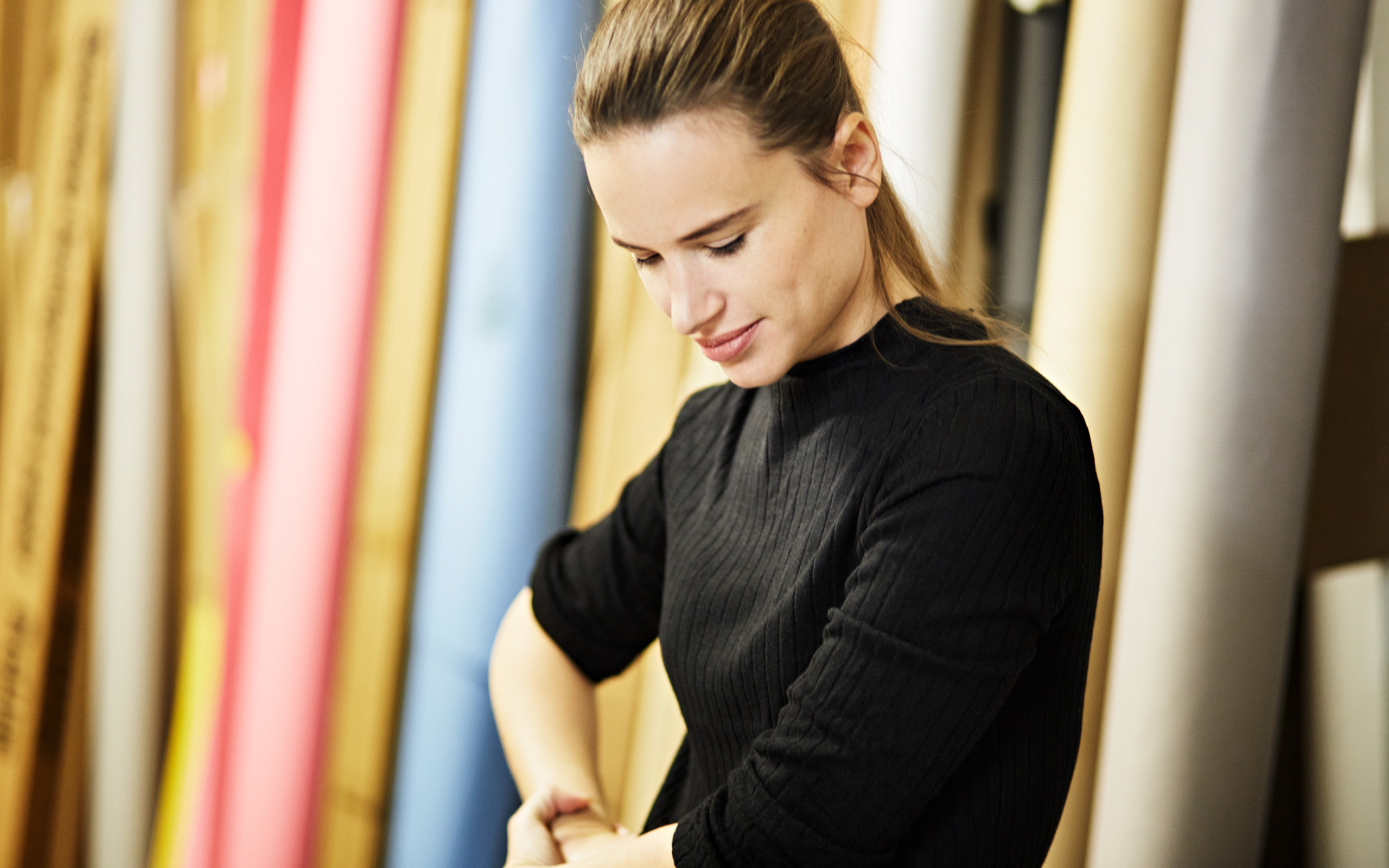
Interview: Florian Langhammer
Photos: Gerhard Wasserbauer


